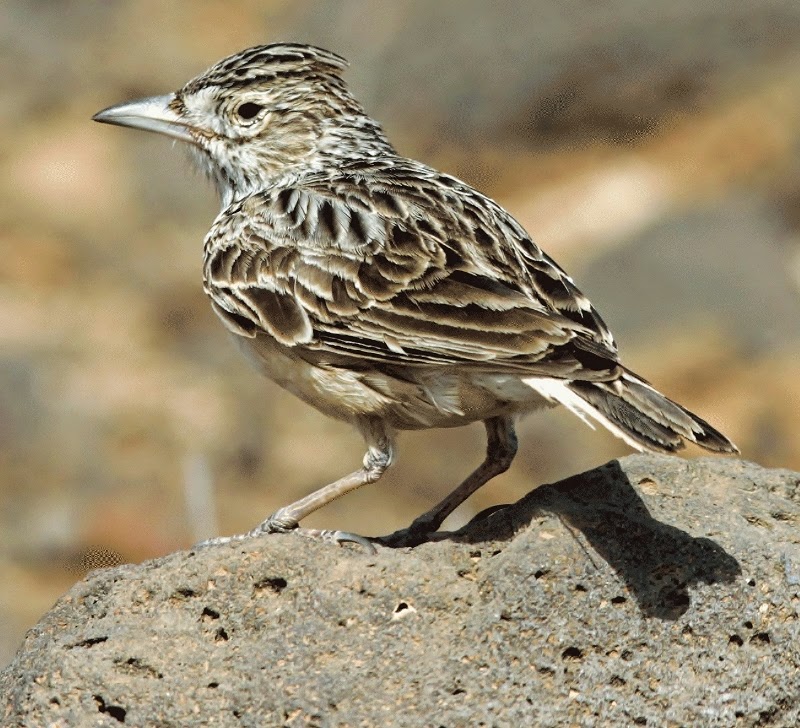 |
| Photo by Paul Donald (Surfbirds) |
Common name:
Raso lark (en); calhandra-do-Raso (pt); alouette de Razo (fr); alondra de Raso (es); Rasolerche (de)
Taxonomy:
Order Passeriformes
Family Alaudidae
Range:
This species is endemic to the Raso islet in the Cape Verde Archipelago, between the islands of Santa Luzia and São Nicolau.
Size:
These birds are 12-13 cm long and weigh 18-28 g.
Habitat:
The Raso lark is found on level plains with volcanic soil and is associated with small vegetated patches od dry grassland and dry scrubland along dry stream beds in which it feeds and breeds. Occasionally, they also use tide pools.
Diet:
They forage on the ground, by digging or turning over stones with their bills, taking Cyperus bulbosus and C. cadamosti bulbs, grass seeds, leaves, branches of Zygophillum simplex, and also caterpillars, adult and larval beetles and grasshoppers, flies, ants, spiders and gastropods.
Breeding:
Raso larks breed mainly in October-December, following the late summer rainfalls, but can breed at any time of the year following irregular rains. Both sexes build the nest, a shallow scrape on the ground, lined with dry grasses and usually located under low scrubs or clumps of grass. The female lays 1-3 eggs, which she incubates alone for 12-15 days. There is no information regarding the fledgling period.
Conservation:
IUCN status – CR (Critically Endangered)
This species has an extremely small breeding range and a global population estimated at 250-1.000 individuals. The population undergoes fluctuations due to rainfall levels on Raso. It has increased rapidly since 2004 but it is uncertain whether this relates to a temporary fluctuation or a longer-term increase. The main threats include long-term desertification in the Cape Verde, nest predation by the Cape Verde giant gecko Tarentola gigas, but the risk of future introduction of mammals that can prey on their nest is also of great concern, ans is now exacerbated by increased tourist activity in the Cape Verde Islands. The Raso lark has been protected by law since 1955 and the Raso islet was declared a national park in 1990, but to date there has been limited enforcement of these laws on the ground. Collecting of young and eggs has now been halted by the activity of a local NGO, Biosfera, and the practicalities and desirability of a possible translocation project are being investigated.







